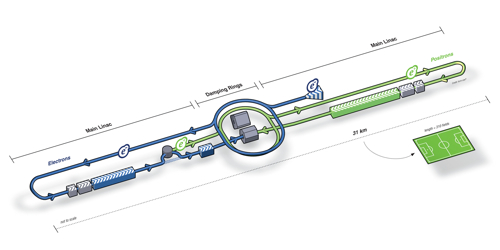
| April 4, 2012 New Executive Board Members Started A Three-Year Term at KEK |
|
 |
From CERN COURIER 25 Oct. 2011 |
.jpg) |
From ILC NewsLine 29 Sep. 2011 |
.jpg) |
From ILC NewsLine 22 Sep. 2011 |
 |
From ILC NewsLine 21 Jul 2011 |
 |
From ILC NewsLine 24 Jun 2011 |
 |
From Accl. Lab. Topics 23 Jun 2011 |
 |
From ILC NewsLine 10 Jun 2011 |
 |
From ILC NewsLine 06 Jun 2011 |
.jpg) |
06 Jun 2011 Determining the cost of the ILC detectors
From ILC NewsLine |
 |
14 Apr 2011 From Accl. Lab. Topics |
 |
1 Dec 2010 Japanese 9-cell SCRF cavity meets ILC specifications |
From ILC NewsLine
Many small klystrons for operability and flexibility
16 Feb 2011
The design of the International Linear Collider has recently changed from featuring two tunnels to just one. This means many aspects of the tunnel design have to be re-thought -- including the distribution of the radiofrequency power, the acceleration technology of choice for the ILC's superconducting cavities. In addition to the klystron cluster scheme, the power-delivery system for radiofrequency cavities introduced in last week's ILC NewsLine, an alternative scheme is being developed at KEK, Japan.
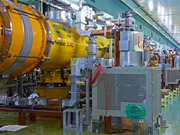
Japanese 9-cell SCRF cavity meets ILC specifications
Designing and fabricating an optimal accelerating cavity is not so simple. There are two important parameters scientists are looking for: the gradient of 35 megavolts per meter (MV/m) and the quality factor (Q0) of greater than 0.8×1010. A Japanese cavity now fulfilled those requirements for the first time at a test which took place at the Superconducting radiofrequency Test Facility (STF) at KEK, adding momentum towards future mass production.
http://www.kek.jp/acc/eng/topics/topics101209.html
From ILC NewsLine
The ILC-CLIC collaboration and technological challenges
Today's issue features a Director's Corner from Kaoru Yokoya, Global Design Effort Asian Regional Director.
In recent years, the collaboration between the ILC and CLIC communities has developed and evolved, and Barry Barish has reported on this collaboration in previous corners. Working groups on many R&D areas have been formed. Recently the Accelerator General Issues Group, which takes care of project strategy and planning, and the Detector Group have also formed. Last month in Geneva, we held our first ILC-CLIC joint meeting (IWLC10), as Peter Garbincius reported. ILC and CLIC are quite different in their ultimate target energies and in their fundamental acceleration mechanisms. Nonetheless, as electron-positron linear colliders they have many technological common areas. Under the tough situation of limited resources around the world, this collaboration is welcome and, actually, we have been producing good results.
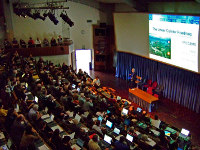
From ILC NewsLine"
Set it and forget it!"
Fermilab and KEK scientists recently hooked up a new cavity tuning system to the various cavities in the so-called cavity-tuner zoo at KEK. This zoo, comprising eight superconducting radiofrequency cavities fabricated by four different vendors from three different regions, was the testing ground for a new development in what is called Lorentz force detuning (LFD) compensation.
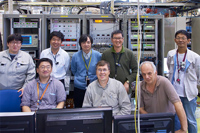
Start operation of the Small Electron Linear Accelerator for calibration of the Fluorescence Detector of the Telescope Array experiment
The Telescope Array (TA) experiment is a ultra-high energy cosmic rays (UHECRs) observation which is established in the desert area about 200 km far from Salt Lake City in Utah state, north U.S. We began the observation in April 2008. The UHECRs are the highest primary cosmic rays which have energy more than 1018 eV. However, we do not understand any fundamental features, for example the chemical composition, their generation and acceleration mechanism, and the theoretical flux limit (GZK-cutoff ).
〜From TRISTAN to B-Factory〜
On May 23, 2010, a talk titled "From TRISTAN to B-Factory" was presented by Dr. Yoshitaka Kimura, Professor Emeritus of KEK, in the IPAC10 lectures to commemorate the 120th anniversary of birth of Yoshio Nishina, "Dr. Nishina and advancement of particle accelerators and their applications in Japan". The outline of the talk is given below. For details see the attached slides.

Jonathan Bagger invites the ILC community to comment on white paper
26 Aug 2010
| Vietnam and Japan have been nurturing cooperative relationship in many fields for many years. For the field of science and technology, both governments signed the Japan-Vietnam Science and Technology Co-operation Agreement to promote and deepen the co-operation in science and technology in 2006. Following year, Shinzo Abe, then Prime minister of Japan, proposed at the East Asia Summit (EAS) to launch a youth exchange initiative totaling 35 billion Yen over five years including the invitation to 6,000 young people from the member countries of ASEAN and EAS to Japan, which was accepted with great welcome. Now, these invitations are bringing many Vietnamese scientists to KEK. | 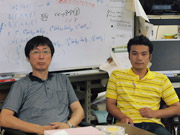 |
| Every day, KEK welcomes scientists and students from around the world. ・・・Bambade, a specialist on machine-detector interface, has travelled to Japan many times as a part of the international team working at the Accelerator Test Facility (ATF). The ATF is a test accelerator focused on generating the super-low-emittance beam, one of the essential techniques to realise the next electron-positron linear collider. The team has already achieved the smallest emittance in the vertical dimension. |  |
multi-purpose, two-dimensional detector called a gas electron multiplier (GEM) for use in small radiation-related experiments. The GEM’s good time- resolution has also given birth to a new field of radiography, called energy- selective radiography. Read here how GEM can play an important role in neutron science, medical applications, and more.
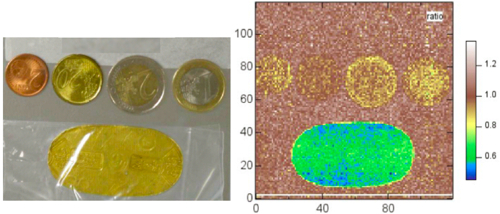
The neutron GEM detector enabled the two-dimensional imaging of metal content. Here the gold content of Euro coins (top) and a Japanese oval gold coin from Edo period (bottom) are shown in green.
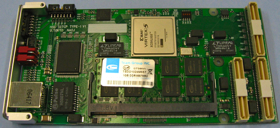 >
> The SiTCP board that allows real-time data transfer via gigabit Ethernet. The square chip at the center is a field programmable gate array (FPGA) on which the network capability is encoded.
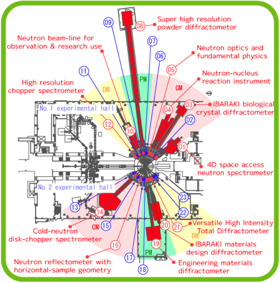
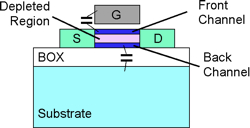
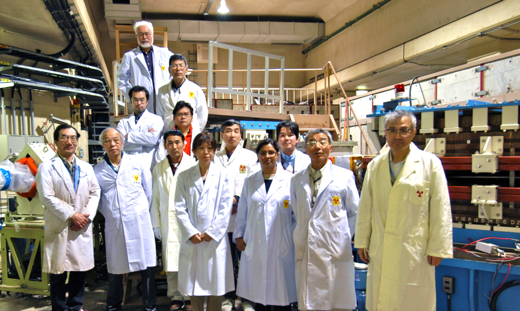
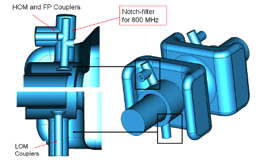
| News |
| Thriving new detector technology: SOIPIX | 2010.03.30 | ||
| On March 4-5, 2010, KEK’s detector scientists and international collaborators from around the world gathered in a meeting room at Fermilab to discuss a new detector technology: silicon-on-insulator pixel (SOIPIX). Learn about KEK’s new technological endeavor, and the recent steps made by collaborators to make this powerful new technology work. |
| Particle accelerators are going digital | 2010.03.16 | ||
| The principle of KEK scientists’ new invention, the induction synchrotron, was demonstrated in 2006, using the existing 12 GeV proton synchrotron at KEK. Now, the team is working hard to bring forth a digital accelerator for heavy ions based on the concept of the induction synchrotron, which they hope to have ready for use in a year's time. Read here about this new technology, and how the team developed the world’s very first digital acceleration scheme. |
| KEKB crab cavity may help LHC upgrade | 2010.03.09 | ||
| In 2009, the KEKB accelerator set a new world luminosity record with the help of a newly installed device called a crab cavity, and the integrated luminosity of KEKB reached 1,000 inverse femtobarn. This is the world’s first successful installment of a crab cavity. KEK scientists’ expertise in this new technology will help in an upgrade of the Large Hadron Collider at CERN. Here is why. |
| A high resolution, high intensity neutron diffractometer | 2010.02.23 | ||
| The team of neutron diffraction scientists at KEK has constructed the world’s highest resolution neutron powder diffractometer, SuperHRPD. In addition to conducting experiments at the frontier of neutron physics, the team puts forth great efforts to involve local industry in their work. Here, read how they managed to achieve this high resolution, and how the world’s first industrial involvement in neutron science came about. | 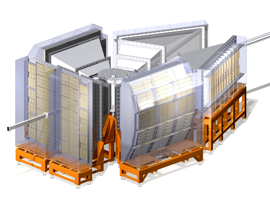 |
||
| A world of researchers joins hands and hardware | 2010.02.09 | ||
| The particle physics community is accustomed to global collaboration, and here at KEK, one of those collaborations has just begun on a core technology for the International Linear Collider (ILC), the superconducting accelerating system. | |||
10/01/26 |
This is also a step forward towards the next generation Photon Factory, the energy recovery linac (ERL), planned at KEK.
10/01/15 |
10/01/07 |
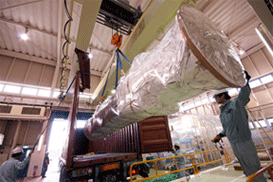
09/12/22 |
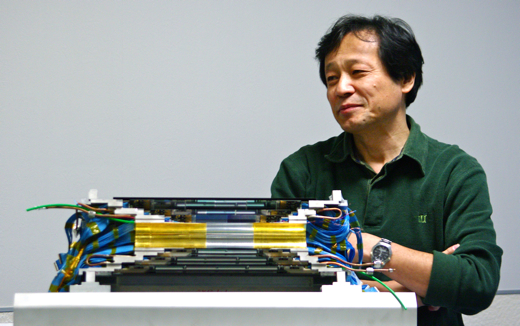
1-1 Oho, Tsukuba, Ibaraki 305-0801 Japan
